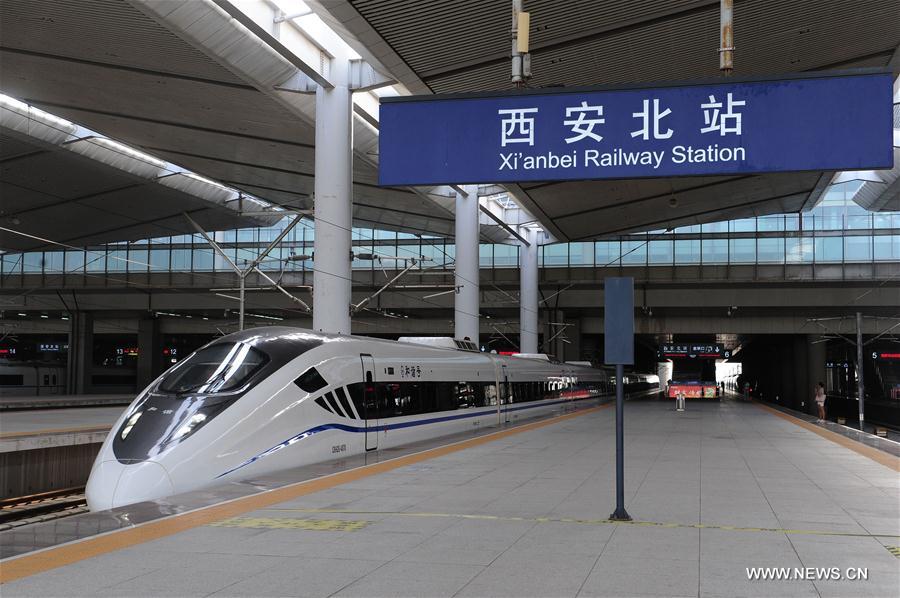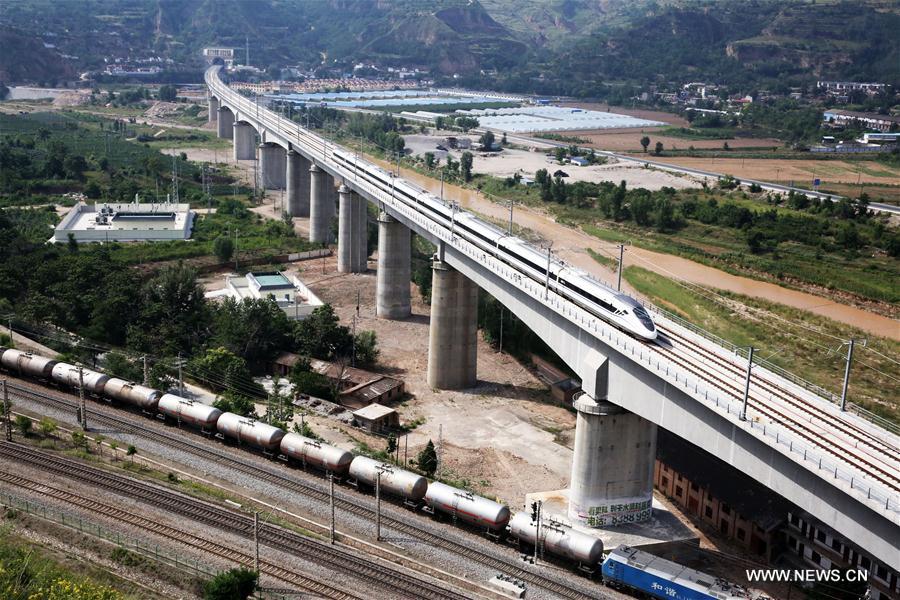This is HUGE news, Dong Bei area of China has always been undeveloped due to lack of sea port, look like they are signing contract with Russia to transit through the Vladivostok port, that means cost of transport will be a lot lower, this will help.
China, Russia plan deal on new Far East transport routes
As China’s leader Xi Jinping visits Moscow to meet Russian President Vladimir Putin this week, deals worth US$10 billion may be signed between the two neighbors, according to media reports.
Xi’s visit on July 3-4 will include possible signing of other agreements, including joint development of two international transport and trade corridors in the Russian Far East to link China’s landlocked northeast provinces to Pacific ports.
Analysts estimate that Chinese freight transporters could save up to $700 million a year using these shorter routes. Investment in the two transport projects is estimated at about $5 billion, mostly on roads, rail and ports.
As much attention is focused on China’s so-called One Belt One Road initiative linking the country with South Asia, Central Asia, the Middle East and Europe, talks on these Far East transport corridors fly under the radar. But the links are nonetheless vital for the regions involved.
The Russian Ministry for the Development of the Far East held extensive talks in June on building the infrastructure and the management of the corridors — known as Primorye-1 and Primorye-2 — with authorities in the Chinese provinces of Heilongjiang and Jilin, according to Russian officials.
Alexander Osipov, first deputy minister of the Russian Ministry for Development of the Far East, explained his talks with the vice governor of Heilongjiang, Jia Yumei.
“The best description of what we’re doing came from Ms Jia Yumei, who said that ‘Finally, Heilongjiang will have its own seashore,’” Osipov told reporters.
The projects also align with the commitment of the two countries to integrate the Moscow-led Eurasian Economic Union with China’s OBOR initiative.
“Our research shows that the total cargo traffic on the two routes could reach 45 million metric tons a year, counting container cargo and grains,” Alexander Galushka, the minister for the Development of the Far East, told reporters. “We expect a rate of return of at least 10 percent on the investment,” he said.
While the projects still require much work, cargo traffic on the routes is growing quickly.
In 2014, 7.8 million tons of goods traveled the routes. In 2016, it was up to 11.3 million tons.
“Primorye-1 and Primorye-2 will play a role in the enormous transport network of the whole continent,” Mikhail Kholosha, a transport analyst and deputy research director at OO DNIIMF-Vostochny, told Asia Times.
Kholosha said the southern area of Far East Russia, the Primorsky Krai, can create a modern transport infrastructure hub centered on Vladivostok as a free port.
“Ports are more effective and powerful when they are used as hubs in a longer transport chain as opposed to being the end-point of a particular route,” Kholosha said.
China, Russia plan deal on new Far East transport routes
As China’s leader Xi Jinping visits Moscow to meet Russian President Vladimir Putin this week, deals worth US$10 billion may be signed between the two neighbors, according to media reports.
Xi’s visit on July 3-4 will include possible signing of other agreements, including joint development of two international transport and trade corridors in the Russian Far East to link China’s landlocked northeast provinces to Pacific ports.
Analysts estimate that Chinese freight transporters could save up to $700 million a year using these shorter routes. Investment in the two transport projects is estimated at about $5 billion, mostly on roads, rail and ports.
As much attention is focused on China’s so-called One Belt One Road initiative linking the country with South Asia, Central Asia, the Middle East and Europe, talks on these Far East transport corridors fly under the radar. But the links are nonetheless vital for the regions involved.
The Russian Ministry for the Development of the Far East held extensive talks in June on building the infrastructure and the management of the corridors — known as Primorye-1 and Primorye-2 — with authorities in the Chinese provinces of Heilongjiang and Jilin, according to Russian officials.
Alexander Osipov, first deputy minister of the Russian Ministry for Development of the Far East, explained his talks with the vice governor of Heilongjiang, Jia Yumei.
“The best description of what we’re doing came from Ms Jia Yumei, who said that ‘Finally, Heilongjiang will have its own seashore,’” Osipov told reporters.
The projects also align with the commitment of the two countries to integrate the Moscow-led Eurasian Economic Union with China’s OBOR initiative.
“Our research shows that the total cargo traffic on the two routes could reach 45 million metric tons a year, counting container cargo and grains,” Alexander Galushka, the minister for the Development of the Far East, told reporters. “We expect a rate of return of at least 10 percent on the investment,” he said.
While the projects still require much work, cargo traffic on the routes is growing quickly.
In 2014, 7.8 million tons of goods traveled the routes. In 2016, it was up to 11.3 million tons.
“Primorye-1 and Primorye-2 will play a role in the enormous transport network of the whole continent,” Mikhail Kholosha, a transport analyst and deputy research director at OO DNIIMF-Vostochny, told Asia Times.
Kholosha said the southern area of Far East Russia, the Primorsky Krai, can create a modern transport infrastructure hub centered on Vladivostok as a free port.
“Ports are more effective and powerful when they are used as hubs in a longer transport chain as opposed to being the end-point of a particular route,” Kholosha said.






